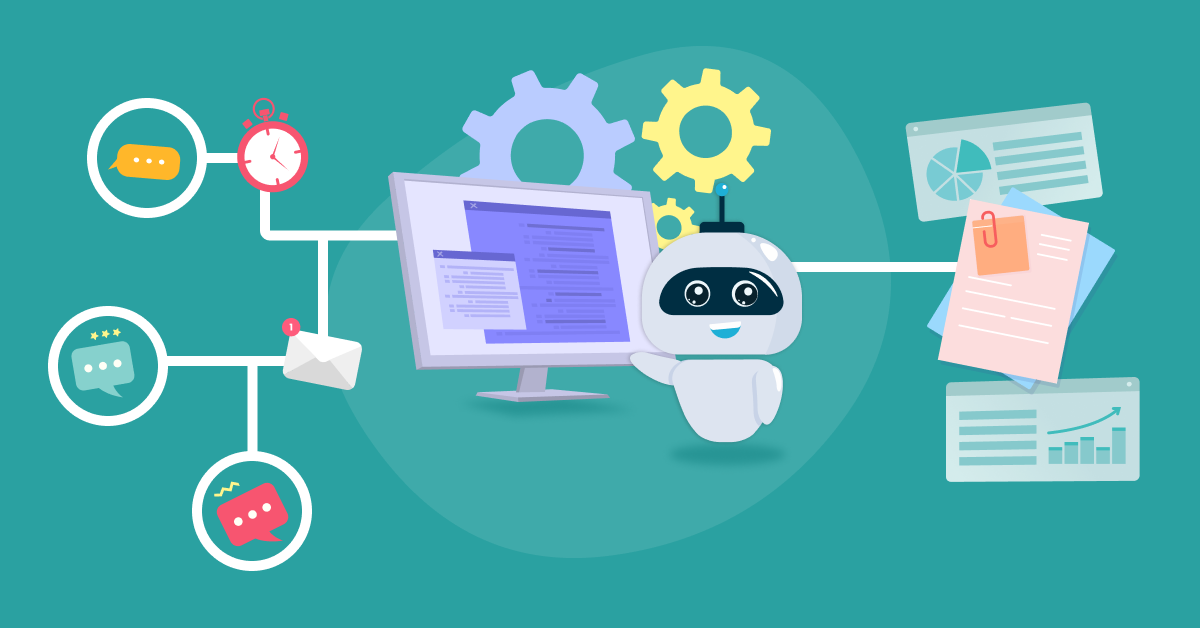What happens when reporting becomes a never-ending pain for your customer service team lead?
Customer service reports are a leading document used to meet and exceed customer expectations. These reports are also used between leads and agents to provide direct feedback. Having access to this user-generated data gives leaders the data-driven authority to make better decisions for their profit and employee performance.
Kaizo has been in the game long enough to hear it all. When we book demos with potential users they say they’re looking for a way to get more out of their days. Leads feel that manual reporting is slow and unreliable, that data mismanagement is messing with their insights, and that agents are demotivated by feedback from metrics they can’t even see.
We don’t want anyone in customer support to have that on their hands. So, today let’s dive deep into the world of automated reporting.
What is reporting automation in customer service?
Imagine this: you’re a customer service manager trying to make sense of heaps of data, from response times to agent performance. It’s a tedious task that eats up your time and energy. But what if I told you there’s a smarter way? Enter reporting automation in customer service.
Reporting automation is like having a personal assistant that collects, organizes, and presents all your customer service data in a neat package. No more manual data crunching or tedious report generation. With the power of technology, you can effortlessly gather insights from various sources, such as your CRM system, ticketing platform, and social media channels.
Think of it as your secret weapon to unlock the hidden gems in your data. It gives you a real-time pulse on your customer service performance, allowing you to track metrics like response times, resolution rates, and customer satisfaction scores without breaking a sweat.
Not only does reporting automation save you time and effort, but it also empowers you to make data-driven decisions. By identifying trends, patterns, and areas for improvement, you can supercharge your customer experience strategy. Plus, with automated workflows and integrations, you’ll always have the most up-to-date insights at your fingertips.
The status quo of customer service reporting
Technology moves quickly. Sometimes faster than businesses can adapt to the change. Also, remember that most call centers are still re-stabilizing after a wave of back-to-back disruptions to the global economy.
A 2022 Benchmarking Report on automation in customer service asked their respondents how they felt about using automated reporting tools. One-third of respondents had a negative outlook on automation in their call center; approaching the idea with apprehension or overwhelm. After so much instability, we can’t blame customer service leads for feeling hesitant, at least at first, about welcoming another change to their workflow.
Their feelings aside, team leads know something needs to give. Most frequently it’s those working directly with agents, calculating metrics, and organizing dashboard insights who advocate the hardest for automated reporting software. More often than not, this becomes an uphill battle that call center employees just don’t have the time to fight.
According to McKinsey, among the obstacles stoking automation anxiety for CS professionals are budget constraints (49%) and a lack of buy-in from leadership (32%).

Senior customer support management is having doubts about optimizing their existing software. However, Directors of Customer Support are also overloaded and lack the time to think strategically about automation solutions. This leads to reactive decision-making that addresses their call center’s needs as they arrive rather than choosing a single tool that can address root causes.
Team leads are becoming disillusioned as they manually pull data from their disparate platforms. According to Intercom, 47% of support teams say unintegrated tools are slowing down their workflow. 56% of teams are using 5 or more tools and another 17% are using more than 10 tools. To make things worse, not all of these tools can export raw data. Thus, creating impermeable information silos and, most importantly, more work for the leads responsible for reporting.
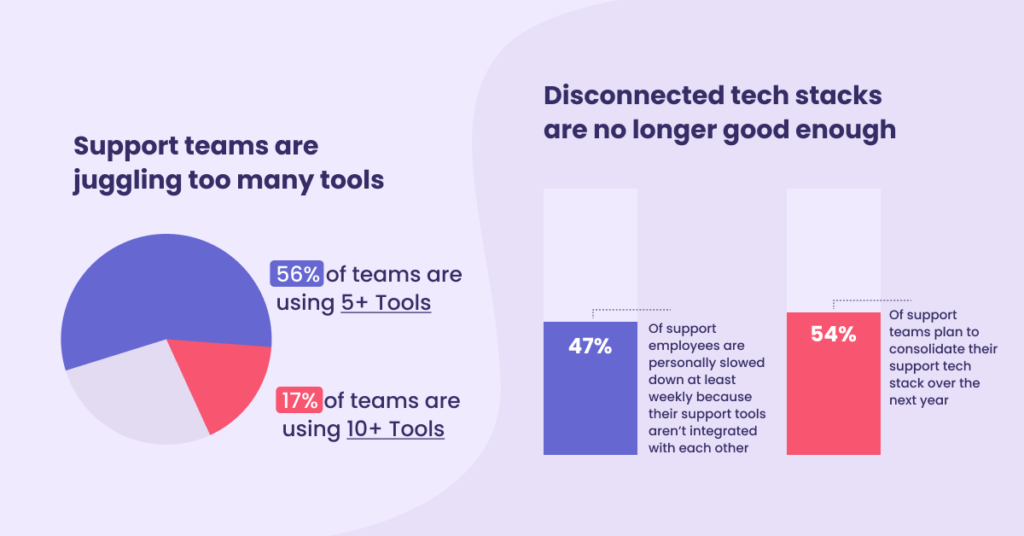
So, what’s with the status quo? From where we’re standing, it looks like the customer service industry needs a wake-up call. Manual reporting is causing more problems than the industry thinks. It’s time to make a change so let’s talk solutions.
It’s time to embrace the power of automated reporting in customer service
Despite the ongoing issues with tangled processes, time-consuming data wrangling, and system failures – businesses are still working with manual reporting systems.
Here are 3 reasons why large CS teams need automated report generation.
Reason #1 You’re wasting time.
Workforce planning, quality assurance management, calculating performance metrics, agent-focused coaching – all of these become a breeze when you don’t have to comb through 10 different tools to create one report.
Zendesk reports that the highest-performing teams on their platform use custom applications to optimize their business behind the scenes. Dive a little deeper and we find that Zendesk’s highest performers specifically have automated functionality. With a single click, these high-achievers can work with real-time analytics so they can drop the calculator and lead with data-driven confidence.
This kind of performance-level automation is most loved by customer service leads. These are people with an eye for analytics and a heart for empowering teams.
Here’s an example from one of our customer stories.
Truecaller is a caller ID app that blocks scammers without intervention for its 200 million active users. Small but mighty, this mid-sized service team grew tired of its outdated tech systems.
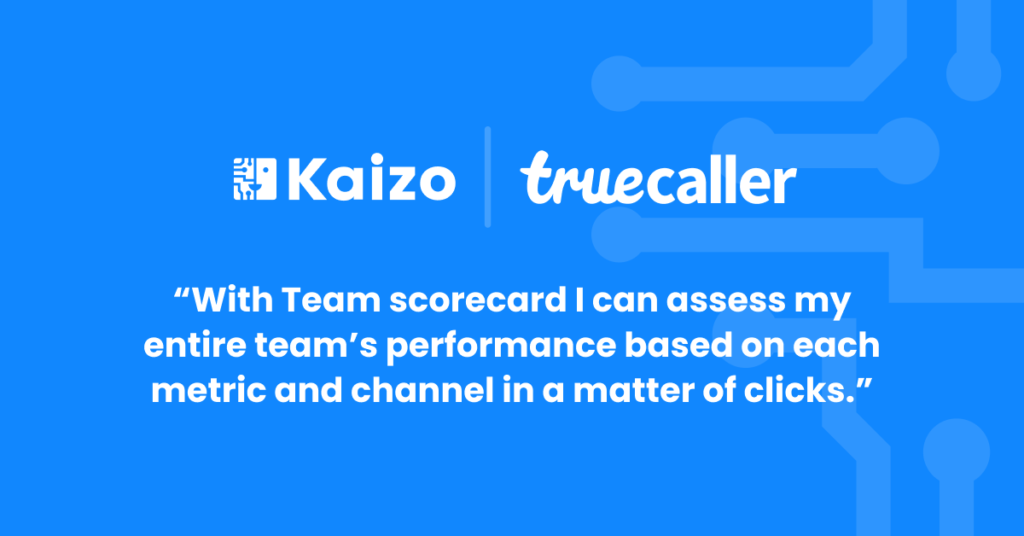
Rohit Salian, Team Lead and QA Expert at Truecaller, remembers spending 3-4 hours every day on agent assessments alone. Looking back, Rohit regrets that half of his days were spent calculating metrics instead of being a leader to his team.
After only 18 months with Kaizo, Rohit’s team was improving at an incredible rate. Here’s how the Truecaller support team worked smarter and faster with Kaizo’s automation features.
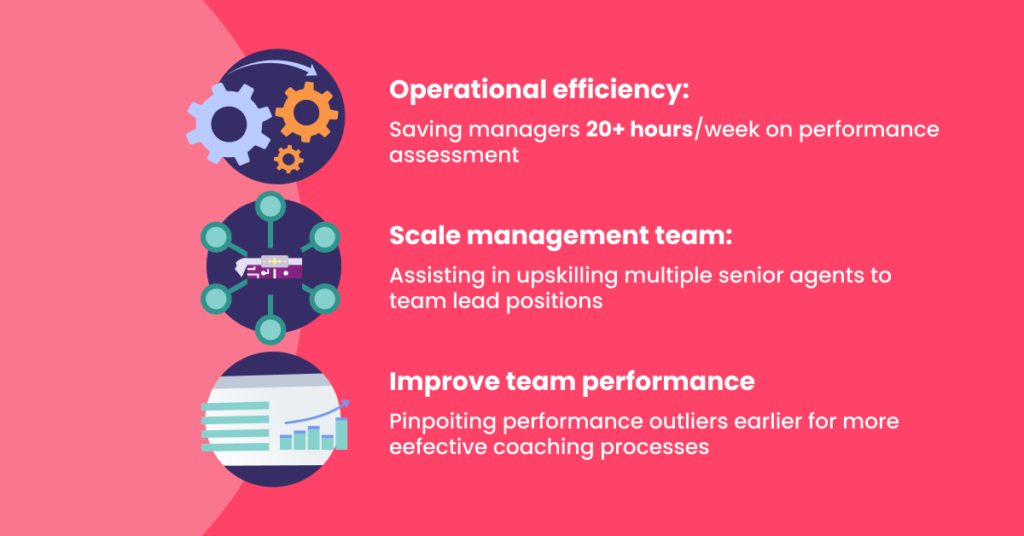
The fact that Kaizo provides agents access to their own performance data played a significant role in Truecaller’s growth. Rohit and other leaders at Truecaller used Kaizo’s automated report generation and real-time performance notifications to quickly identify outliers. Leveraging these insights to drive actionable interventions not only resulted in increased productivity.
With solutions like automated report generation, CS professionals can create a real-time flow of data that their report automation software captures, categorizes, and calculates into custom metrics at the touch of a button. The ability to grab real-time and historical data also creates a satisfying one-step solution to high-risk immediate needs.
Reason #2 Errors are more likely with manual reporting
Having automated report generation doesn’t just save time, this technology can also guarantee accurate business analytics. Additionally, monitoring your business’s quality of care requires real-time insight into agent performance and customer satisfaction.
Wrangling data across multiple platforms is a tiresome task.
Having to rely on manual reporting software requires a level of focus and precision that can be difficult for anyone, let alone a team lead working in a chronically understaffed industry. In fact, the strain of working in the call center without human-friendly tech accommodations is correlated with visual processing issues and eye strain. Add on the fact that 88% of spreadsheets contain simple but problematic errors and you’ve got a problem on your hands.

This emphasizes the need for call centers with 50+ agents to evaluate the security of its service infrastructure. With the amount of data a call center generates daily, it’s important to adopt safe, reliable systems. Not only for your company’s safety but for the sensitive information that your customers share with your company.
Zendesk’s user data shows that companies are handling 3x more data than in previous years. Working in manual spreadsheets and sending reports from person to person via insecure channels is simply dangerous. Email attachments with files that look like excel are becoming the norm for phishing scams.
Limiting the risk of that is critical in this data-rich environment. Companies that don’t take measures to protect their data could face legal battles and expensive penalties for not safeguarding their customer’s personal information.
Automated reporting tools remove human error risk and ensure data security. When automatic reports are up-to-date and easy to collect, leads can let go of their stress. With the touch of a button, leaders have a reliable, consistent, and accurate foundation to build on.
Reason #3 Your reporting systems aren’t resilient to change
Investing in report automation software provides organizations with a certain level of security for the future. When a crisis hits, businesses will want centralized, automated reporting systems in place. This is a safety measure that can make or break a CS team in transition. It’s time to adopt a mature reporting system. One that will automate your reports and allow your company to be sustainable, resilient, and scalable.
Take Foot Locker Europe as an example.
This high-performing service branch, like so many other industry giants during the COVID-19 crisis, was suddenly forced to work from home.
This is a dramatic disruption for teams who had to reinvent their way of working. In the face of an international pandemic, Foot Locker Europe needed a solution that could empower agents from the safety of their homes.
In 2020, Foot Locker Europe started using Kaizo and let our automated reporting and QA solution lead their Customer Care teams safely into the “New Normal”.
Foot Locker Europe team leads were able to use Kaizo software to track the unique pain points that came with remote retail support delivery at the start of the COVID-19 pandemic. Automated data collection and real-time analytics were the keys to identifying the root causes for the novel situation that Foot Locker Europe found itself in.
Without the unnecessary burden of manual reporting, customer service representatives became top-quality front-line heroes. Because Foot Locker Europe responded quickly and prioritized automation as a solution, they were able to get through an unpredictably disruptive crisis with incredible success.
During this time, Foot Locker Europe cut their Resolution Time by 75%, their CSAT grew by 13%, and thousands of customers received their items on time!
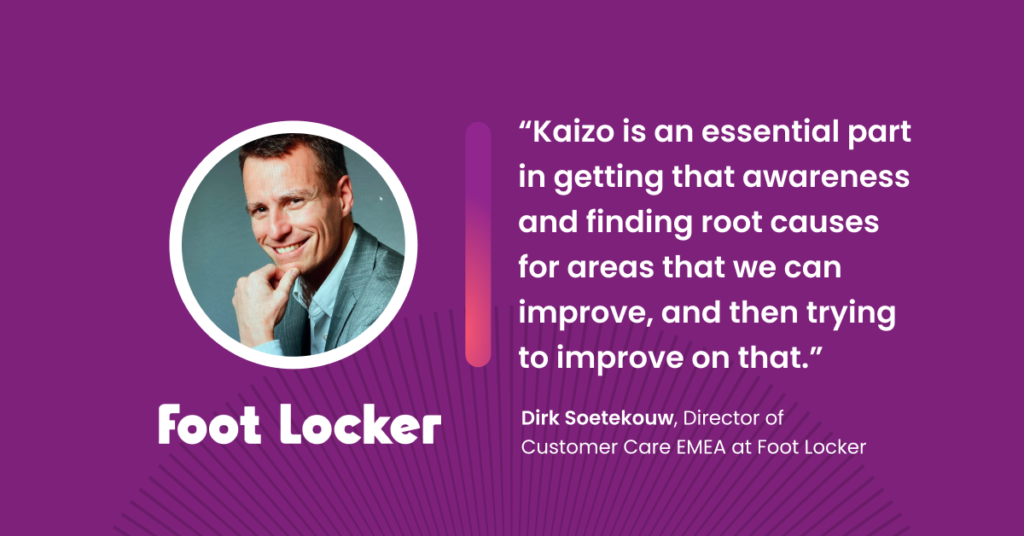
Tracking metrics was the only way for call centers to make sense of these incredibly unpredictable times. If the pandemic had one purpose it was to teach businesses the importance of resilient and real-time systems of support.
Closing thoughts
So, how can report automation improve your workflows?
One of the key benefits of report automation is its ability to save you precious time. Instead of manually collecting data from multiple sources and compiling reports, automation tools can do it for you in a fraction of the time. With a few clicks, you can generate comprehensive reports that provide insights into crucial metrics such as customer satisfaction, response times, and agent performance.
Not only does report automation save time, but it also enhances accuracy and consistency. Manual reporting is prone to human errors, which can lead to misleading insights and flawed decision-making. With automation, you can eliminate these errors and ensure that your reports are based on accurate, up-to-date data. This empowers you to make informed decisions and take actions that drive meaningful improvements in your business.
Another advantage of report automation is its scalability. As your business grows and data volumes increase, manual reporting becomes increasingly challenging and time-consuming. Automation tools can handle large datasets effortlessly, allowing you to keep up with the growing demands of your organization. Whether you’re a small startup or a large enterprise, report automation can adapt to your needs and scale with your business.
Additionally, report automation enables real-time reporting, providing you with instant access to the most current information. You can monitor key performance indicators in real-time, identify emerging trends, and address issues promptly. This agility allows you to stay proactive and responsive in an ever-changing business landscape.
In summary, report automation offers significant advantages for your reporting process. It saves you time, improves accuracy, enhances scalability, and enables real-time insights. By leveraging automation tools, you can streamline your reporting workflows, make data-driven decisions, and unlock the full potential of your business.
A call center without automated reporting can spend so much time pulling data and calculating metrics that they get lost in numbers and let their other responsibilities fall by the wayside.
The agents and their leadership deserve software that makes offering customer satisfaction a whole lot easier.
If you agree, book a demo with Kaizo today!
